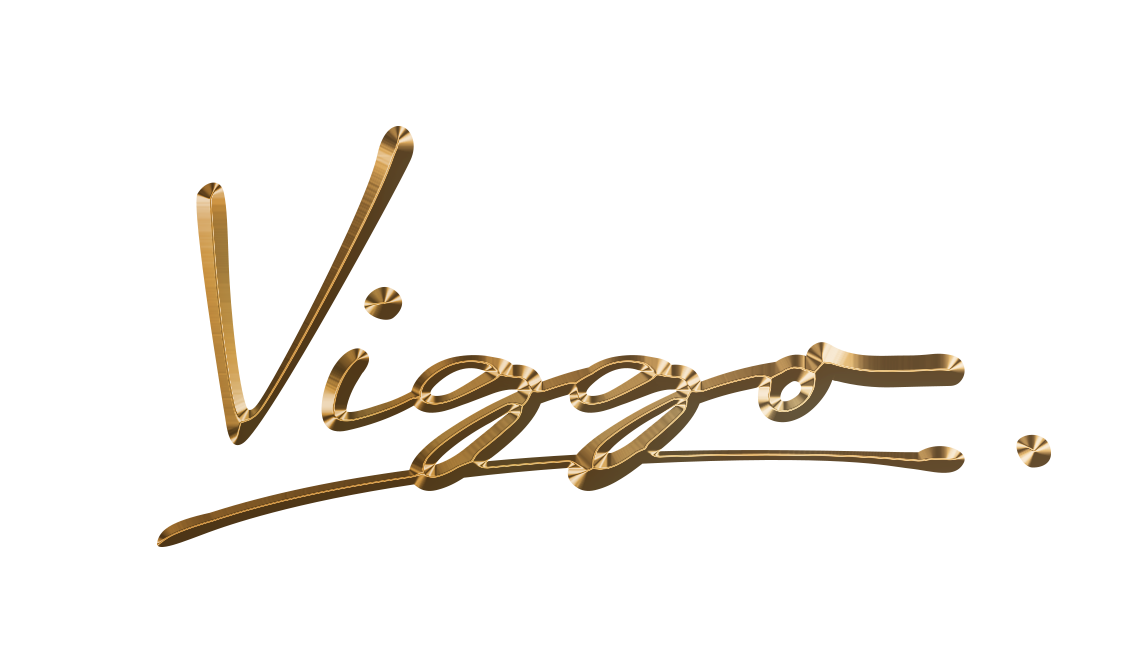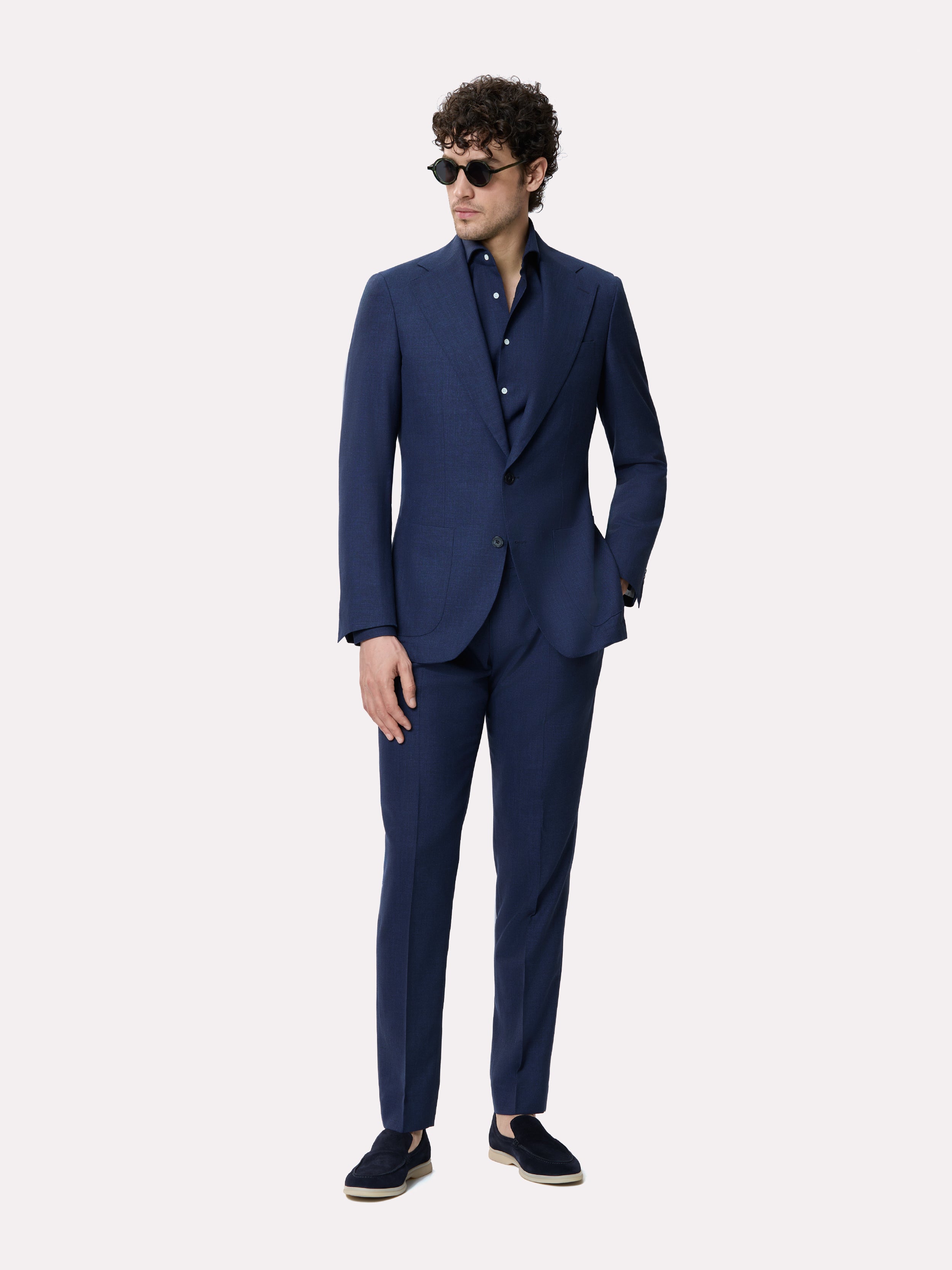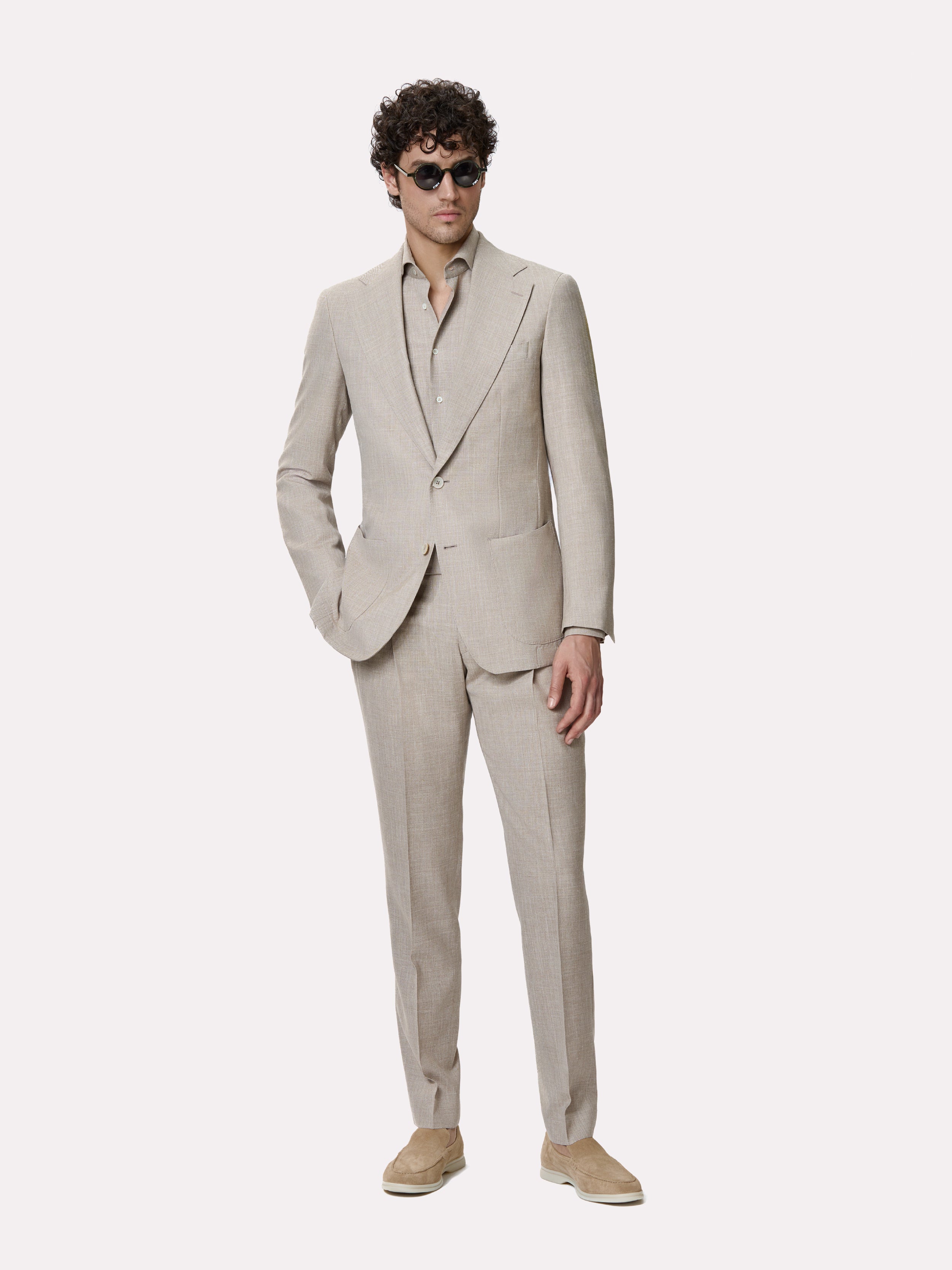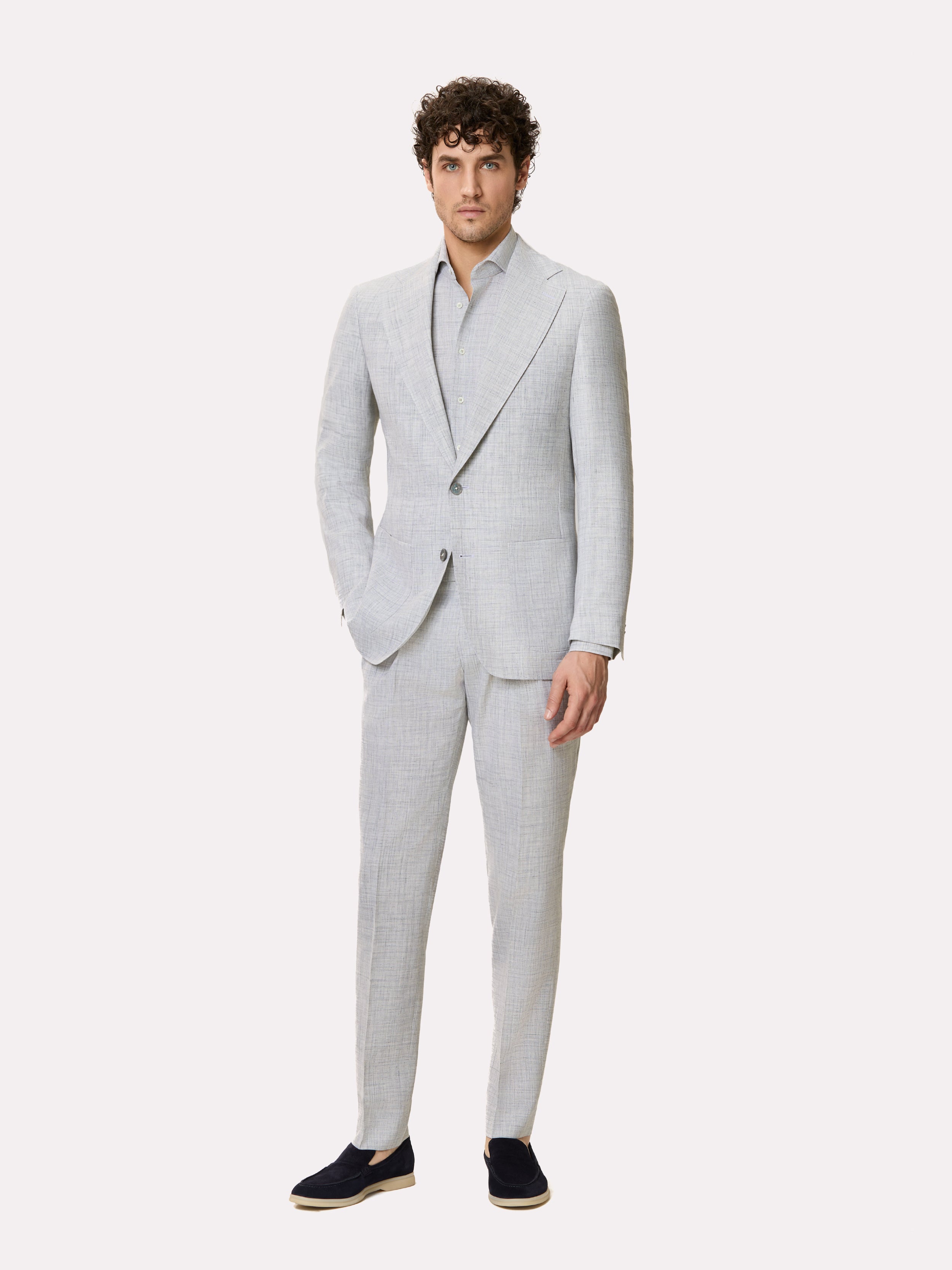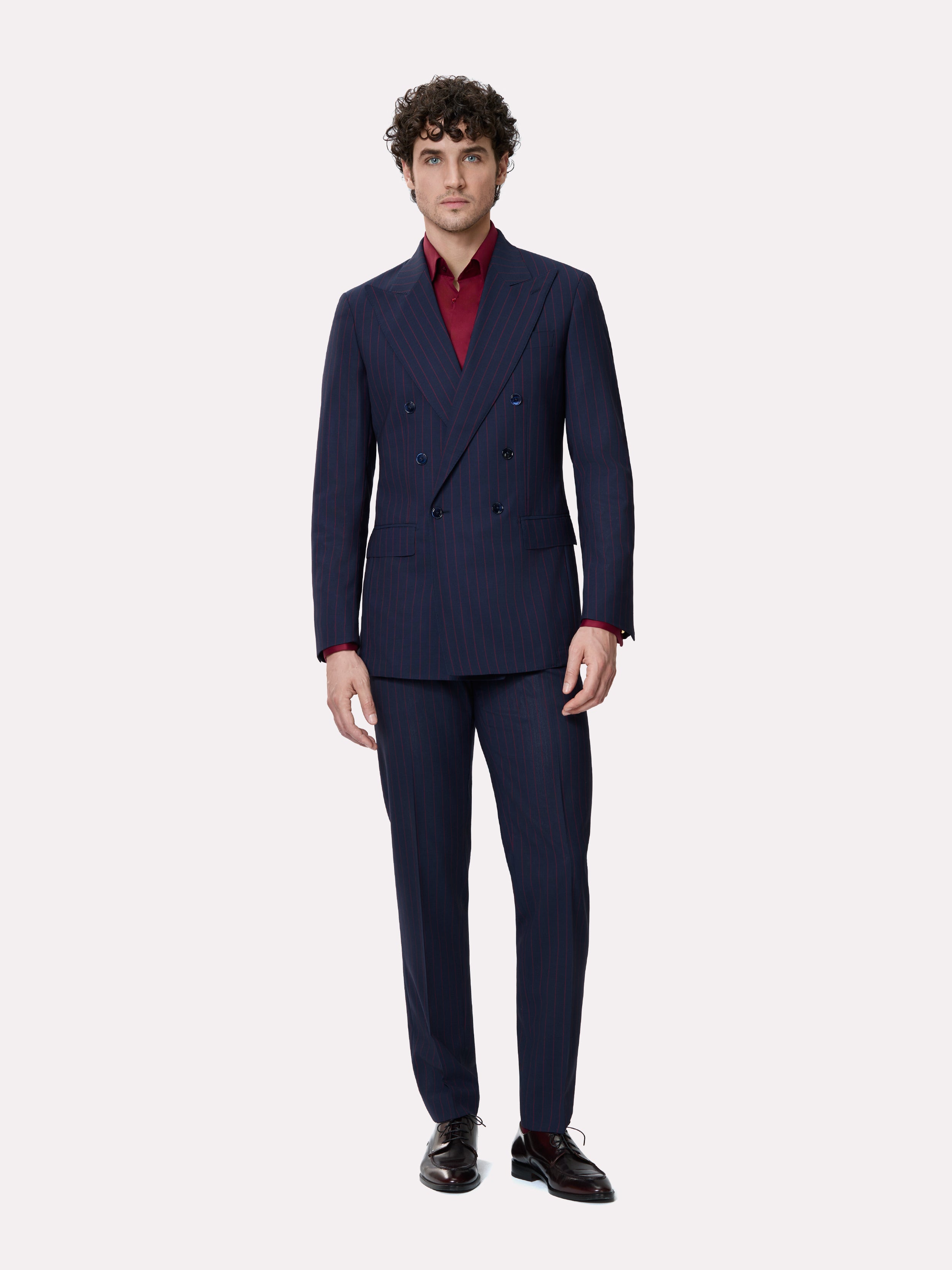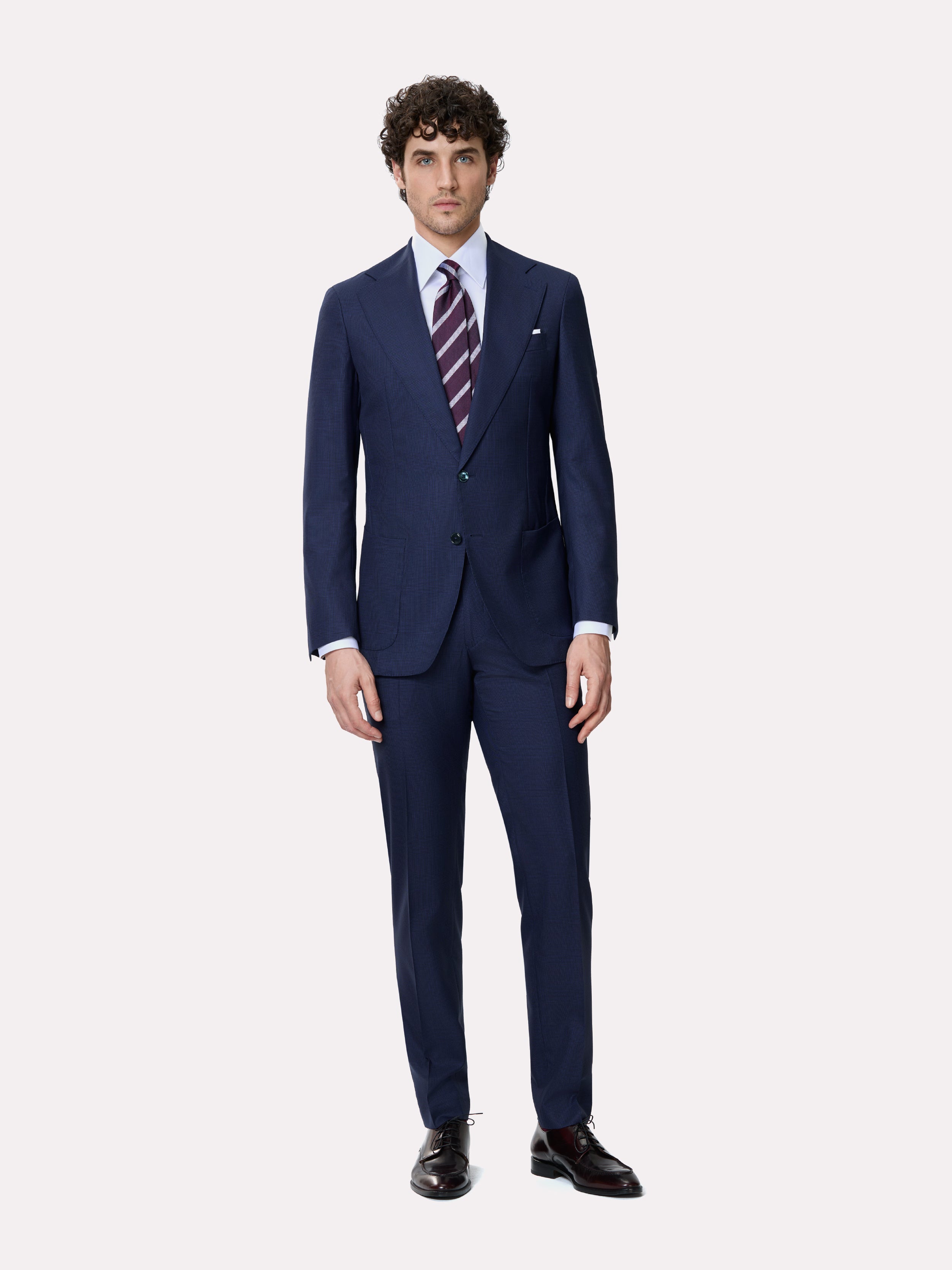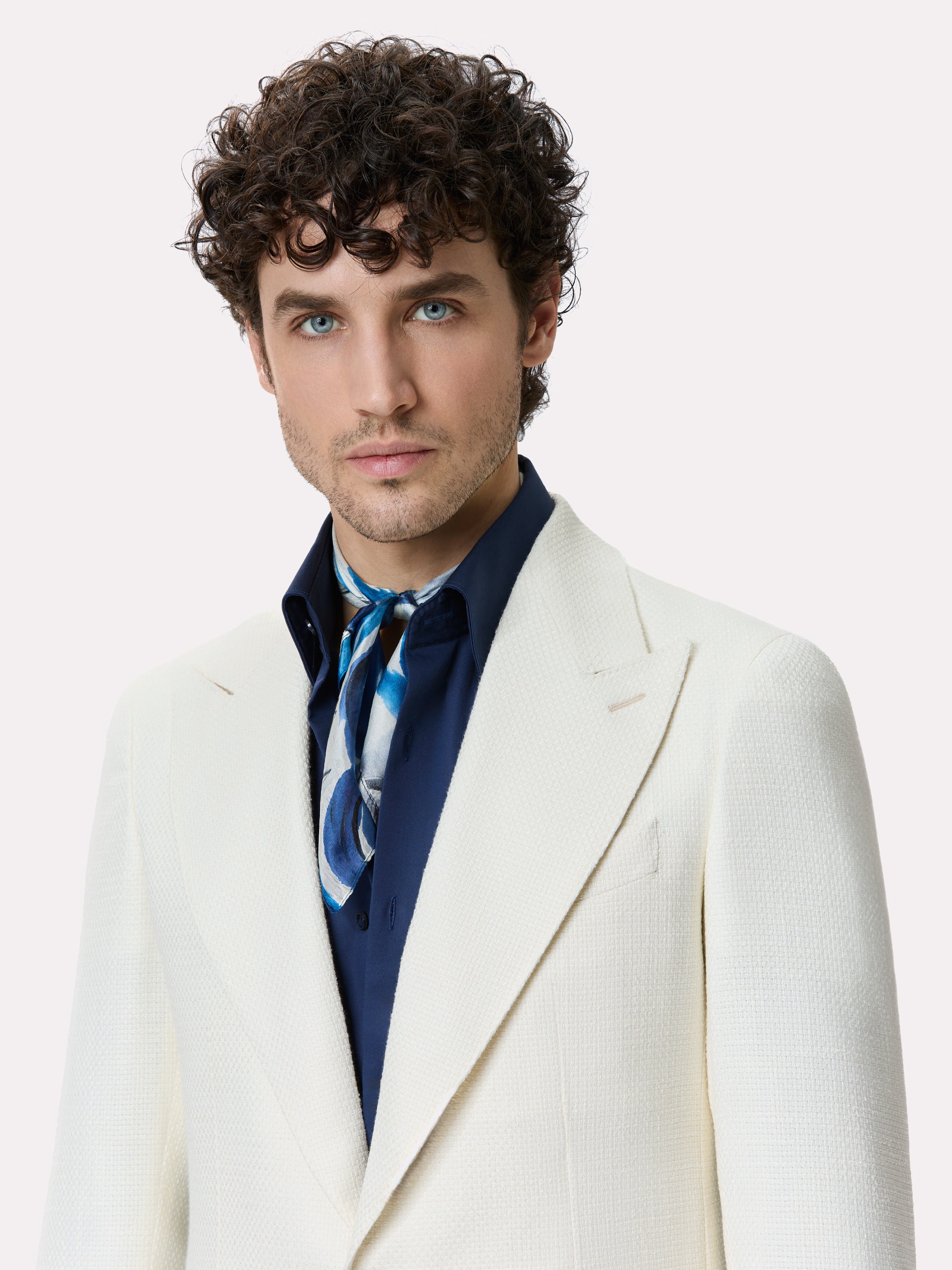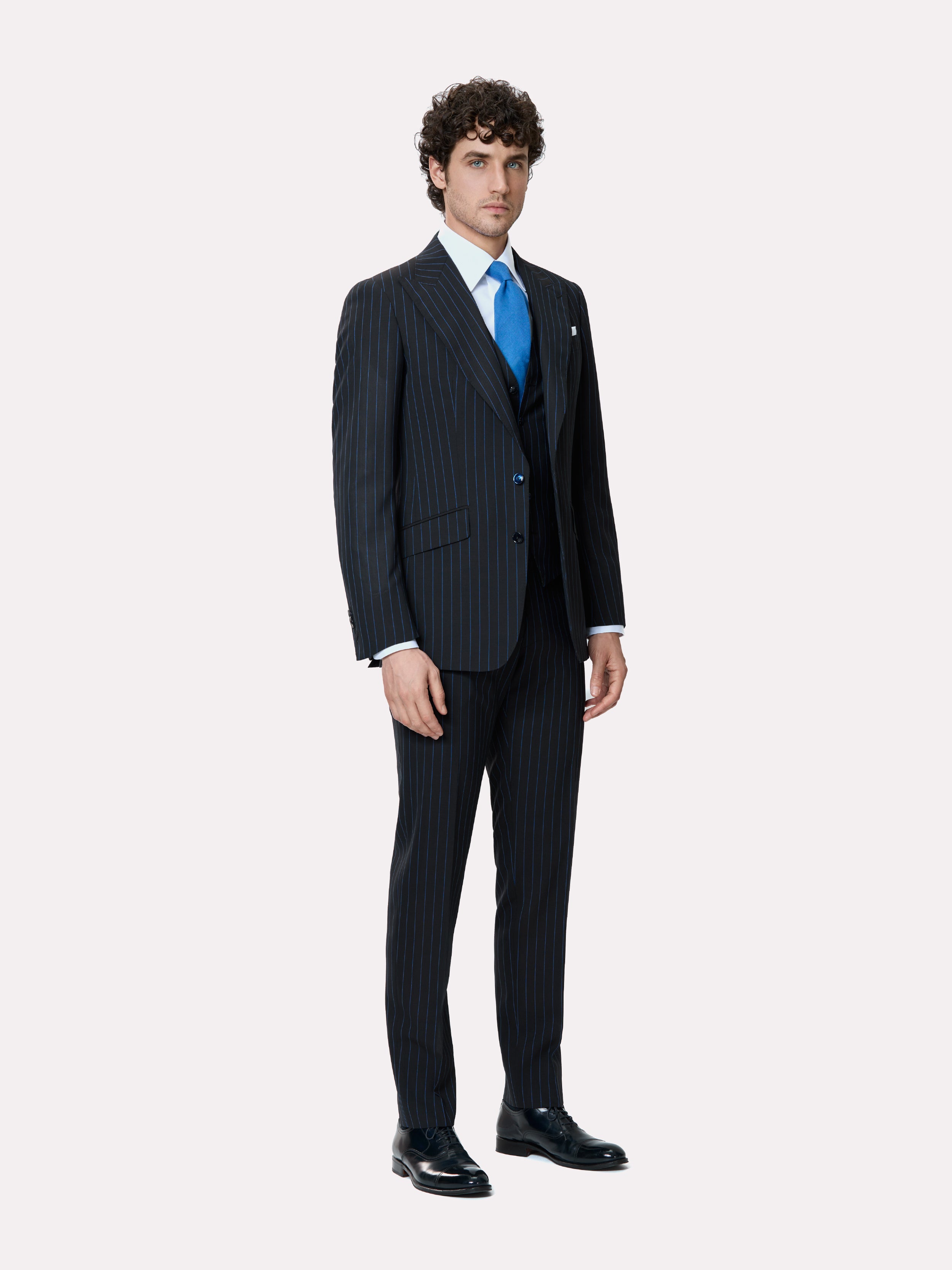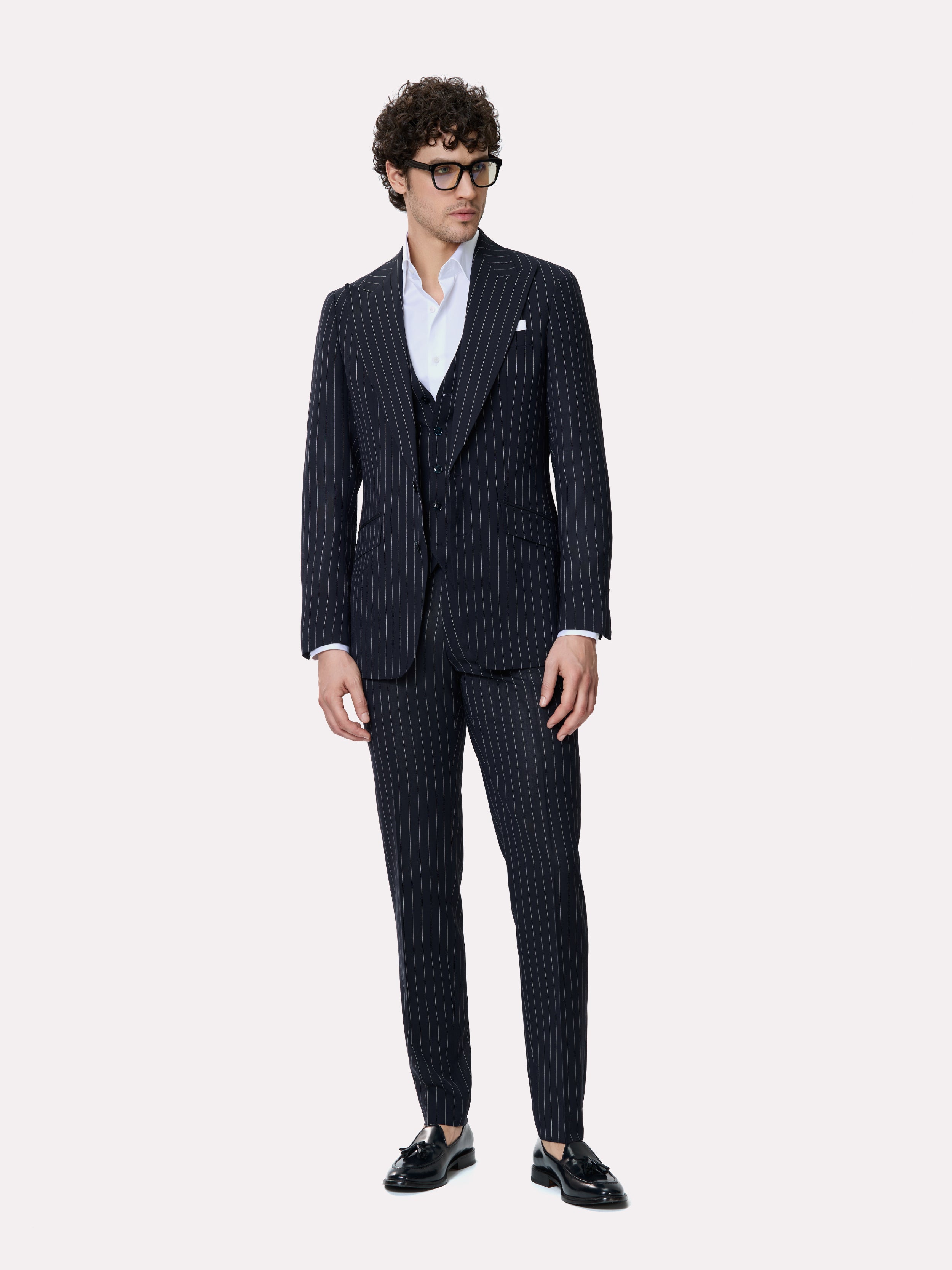THE ART OF CUSTOM TAILORING
Welcome to Viggo Tailoring, where the art of tailoring meets the precision and refinement of custom tailoring for men and, more recently, for women. In our vision, a suit is not just a piece of clothing, but an expression of your unique personality and style. Discover what a made to measure suit truly means and how it can redefine the standards of elegance and comfort. Master tailor Viggo leaves his mark of talent in high-value sartorial objects, Made-to-Measure or Bespoke. The wearer's measurements are drawn on the fabric, like an art of top tailoring, defined by carefully studied handmade finishes.

WHAT DOES A MADE TO MEASURE SUIT REALLY MEAN?
A Made to Measure men's suit is a reflection of the wearer's personality, built exclusively based on their choices, starting with the fabric, through customization details and up to the design and cut. It is a made-to-order men's suit, starting from a pre-existing pattern, used by our tailors at Viggo Tailoring to customize the suit. It is made exclusively according to your individual measurements and preferences, down to the smallest detail.
The process involves taking measurements from a template and customizing the details related to design, material and cut, thus ensuring a perfect fit and a unique style. Because each stage of making a custom suit is particularly important and is treated individually, together with the client, control over the final result is absolute.
Unlike ready-to-wear suits, which are produced in collections (series) and available immediately, our made to measure suits offer a high degree of personalization, which makes the difference. In addition, made to measure has a shorter execution time of approximately 2 weeks (even 7 days in an emergency when the fabric is in stock at Viggo Tailoring) and fewer intermediate samples compared to bespoke suits, which are completely handmade, without any pre-existing pattern.
A custom-made suit requires perfect quality, and quality is given not only by the product itself, but also by the fashion consulting services offered by Viggo Tailoring experts.
THE DIFFERENCES BETWEEN BESPOKE AND MADE TO MEASURE SUITS
Depending on the production method, men's suits are of three types: custom-made, or bespoke, or made to measure, and ready to wear.
Bespoke suits are tailor-made suits, meaning they are made entirely by a tailor in a classic way, manually, from scratch, without a pre-established pattern. At Viggo Tailoring, this involves entirely manual work, from body measurements to personalized patterns, sewing and finishing. Being made entirely by hand, the production time for a bespoke suit can last up to more than a month, with the need for three or four intermediate samples. A bespoke service in the true sense of the word is rare in Romania, and in this case the cost becomes a tailor-made one.
Made-to-measure suits are made through a more efficient process in terms of execution time and costs. The measurements are taken based on a standard suit and will be completed in a form along with the fabric, details or special requirements. The standard patterns are modified depending on the customer's characteristics, the finishes being done manually. The execution time of a made-to-measure garment at Viggo is approximately two weeks, and the quality is exemplary. The advantage is that, once the customer's measurements are saved in our system, they can choose the fabric and details, even online or over the phone, thus saving precious time.
Most of the stitching in a made to measure suit is done with sewing machines. This allows for high speed and very good consistency in execution. Fine details and finishes are done by hand by experienced tailors at Viggo Tailoring. These may include stitching for lapels, buttonholes, cuffs, collar, shoulder padding, sleeve openings, button fastening and lining.
The made to measure process is a hybrid method that combines the advantages of modern technology with the traditional art of tailoring, offering a balance between quality, customization and efficiency. Although there is a high degree of customization, it is still lower compared to a bespoke suit created completely by hand.
The prices of made-to-measure men's suits are, compared to bespoke ones, more affordable, due to the combination of methods that reduce the production time of manual labor, which is limited only to fine things.
Many customers who are less familiar with custom tailoring are hesitant when shown a fabric sample, finding it difficult to imagine the finished product. For this reason, many customers prefer to choose ready-to-wear clothing, adjusted to their own measurements, from Viggo's in-house tailors.
THE DIFFERENCES BETWEEN A READY TO WEAR SUIT AND A MADE TO MEASURE SUIT
The difference between the two refers to the production process, the level of customization, and the fit on the body - but even on the side of ready-to-wear suits, made according to standard size templates, the quality can be exceptional and the advantages are substantial.
Chances are that an “off the rack” jacket, pants or shirt will not fit your body as well as a custom-made garment, but the easy access to them and the much more affordable price can be decisive factors when comparing the two options. One of the main advantages of Viggo Tailoring’s ready-to-wear lines is that of diversity.
The multitude of models and styles, whether casual or elegant, slim or regular, in the trends of the fall-winter or spring-summer season, offers the customer not only ease of choice, but also certainty.
Ready-to-wear collections are now very complex, and the availability of products in different sizes, as well as the in-house tailoring service, ensures an optimal time for purchasing an outfit, which, for many, represents a real advantage. However, , it has long been known that a suit taken off the shelf does not always adapt perfectly to the wearer's constitution and personality the way a made to measure one does.
Whether you choose Ready-to-Wear or Made-to-Measure is ultimately a matter of preference. Some men are hesitant when they see a simple piece of fabric in front of them, finding it difficult to imagine the final product. , and others are endowed with a conformation suitable for ready-made clothes, all that matters, in the end, is that any event is celebrated with an outfit tailored to the wearer's personality.
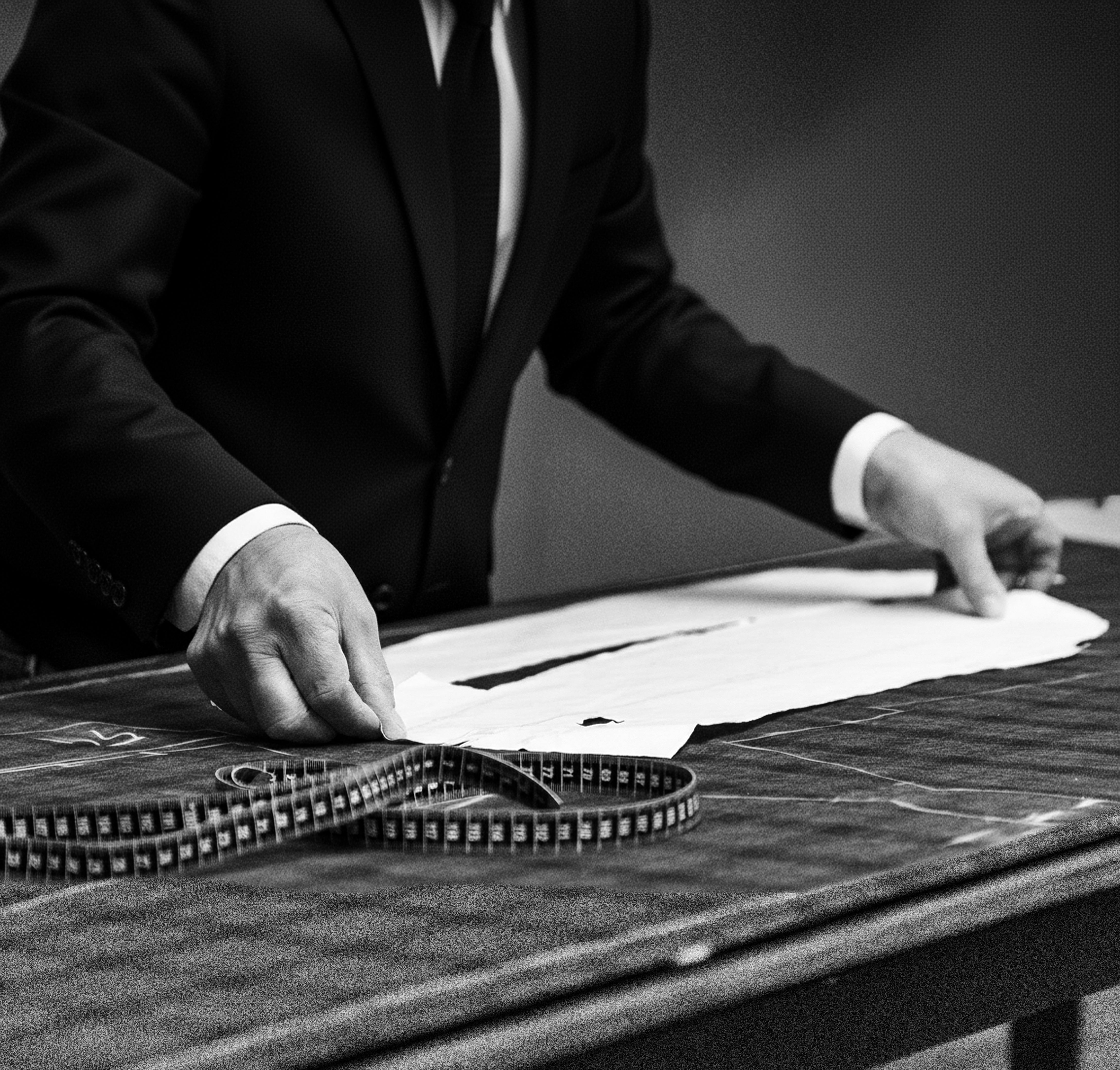
STEPS TO ORDER A MADE TO MEASURE SUIT
At Viggo Tailoring, the process for creating a made-to-measure suit begins with a visit to the showroom, where you will talk to a clothing consultant to establish the details of the desired suit. Here's how the process unfolds:
1.
VISIT TO THE VIGGO SHOWROOM
At Viggo, choosing the right suit starts with... a dialogue. Why this? Because, before establishing the physical details of the future suit, it is very important to talk to a professional clothing advisor.
In a completely unique and charming environment, provided by the heritage house of painter Gheorghe Petrascu, each client is listened to to understand the context in which the desired costume will be worn, the location, the type of event, but also to discover their own style, personality, essential aspects for achieving an optimal result.
2.
CHOOSING THE COSTUME MODEL AND MATERIAL
The next step is the choice of fabric, which is determined by the season, the location of the event, the theme. Close collaboration with the most appreciated fabric suppliers in the world has led to the creation of a collection of over 5000 fabrics in a fascinating color palette, with the most special textures and patterns, so as to facilitate finding the ideal material.
Everything is possible through access to an extensive variety of premium fabrics from renowned manufacturers from Italy and England: Loro Piana , Ermenegildo Zegna, Scabal, Lanificio Tallia di Delfino, Vitale Barberis Canonico.
3.
CUSTOMIZING THE DETAILS
The most exciting and artistic step is customization. Once the fabric is chosen, it's time to freely express your imagination by choosing every detail related to the costume design.
Starting with the type of construction, whether half-canvas or full-canvas, everything is personalized: the type of lapel (notched, spit or shawl), the number and pattern of buttons (one button, two buttons or two rows of buttons), the type and positioning of the pockets, the lining, the buttonholes, even the thread used in sewing the buttons or the lining. The choice of text and style of the monogram inside the jacket is the final personal touch brought to a unique, perfect piece of clothing, specially created for memorable events.
4.
TAKING MEASURES
The most important step in creating a Made-to-Measure suit is taking measurements, for a perfect fit.
Using a template, i.e. a ready-made suit, Viggo clothing consultants decide, together with the client, which measurements are appropriate for his or her body type. Shoulder width, waist, sleeve length or trouser hem, everything is carefully checked to obtain a flawless fitting. Going through all these steps, the result will undoubtedly be spectacular.
5.
BAG CONSTRUCTION
The construction of a jacket focuses on its front, consisting of two layers of fabric and a reinforcing intermediate layer, designed to provide the cleanest possible appearance and, at the same time, extraordinary comfort.
For that intermediate layer, either iron-on, as in the case of the vast majority of jackets, or canvas, as in the case of Viggo jackets, can be used. This canvas is, essentially, a cotton canvas reinforced with horsehair, hand-sewn to the fabric, its purpose being to provide naturalness, structure, durability and a premium look. Even if it is not visible, canvas is an essential element when we like a jacket and want it to stay in our wardrobe for a long time.
At Viggo we use two types of construction: half-canvas (semi-traditional), for our Ready to Wear suits, and full-canvas (traditional), for our Made-to-Measure and Bespoke suits. The difference between the two is the surface area covered, with the traditional method using canvas from the chest down to the hem.
The time required for the production of such an outfit is approximately 2 weeks.
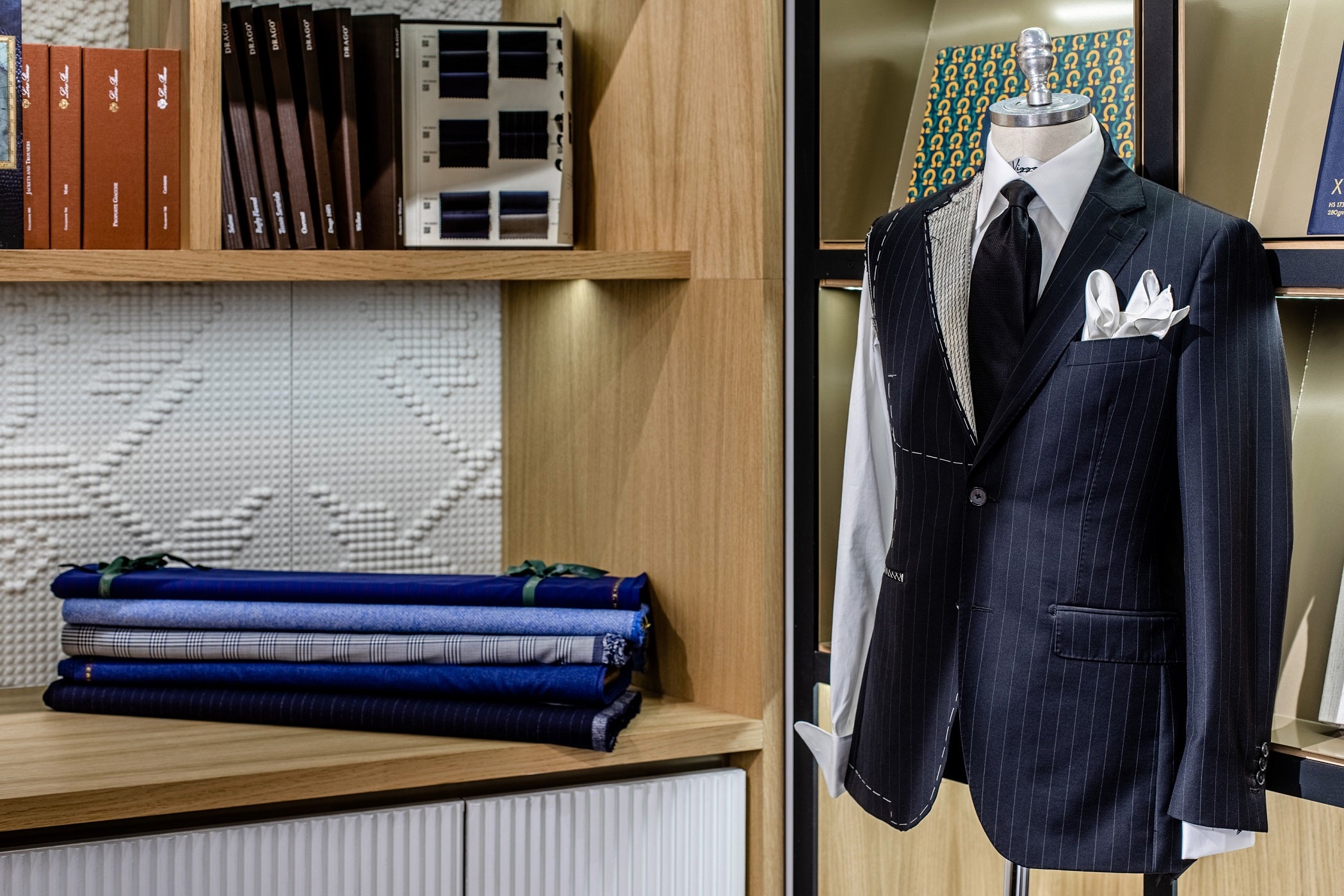
HOW DO WE SELECT MATERIALS?
The decision on the material is made based on several aspects. The season is one of the most important.
For spring-summer, thin fabrics weighing up to 230g per linear meter will be chosen, made of wool, cotton, linen, silk or combinations of these. The colors are predominantly in bright shades, with white being the dominant color, and the design varies between plains, plaids or contrasting stripes.
By comparison, the cold autumn-winter season is dominated by heavy fabrics, between 260 and over 300g per linear meter, and the colors are most often earthy: shades of brown, navy blue, dark green, burgundy, beige. As a design distinction, the cold season surprises with unprocessed, three-dimensional textures, surprising to the touch.
HOW DO WE CHOOSE THE SUIT MODEL?
The details of the suit will, of course, be chosen depending on the context in which it will be worn. The most common such situations are business, ceremonial or casual.
The difference between the types of jackets is given by several elements: the lapel pattern (notch, peaked or shawl), the number of buttons (one button, two buttons or two rows of buttons) and, rarely, the number of slits or the type of lining.
● Thus, a business suit will always be constructed with a notched or peaked lapel, either two-button or, rarely, two-row buttons. The trousers are generally classic, slightly slim and, optionally, with cuffs.
● On the other hand, a tuxedo is a very special piece. With a peaked or shawl lapel, always dressed in silk, it is distinguished by its single-button construction, pockets with silk welts and trousers that can be built with silk pleats.
● In the case of casual outfits, the most common combinations are contrasting jacket and trousers. The jacket will have a notched or peaked lapel, two buttons, two slits and, most often, semi-lined, for extra comfort. The trousers are generally shorter and can be ironed with or without a stripe.
WHAT IS THE ESTIMATED TIME TO MAKE THE COSTUME?
The lead time for a custom suit depends on the fabric and construction chosen. For a stock fabric, the delivery time is a maximum of three weeks, while for a fabric ordered from one of our suppliers, the lead time can increase by up to one week. Also, a traditionally constructed suit will require two days more than a semi-traditionally constructed one.
HOW MUCH DOES A CUSTOM-MADE SUIT COST?
A custom-made suit is an investment, but even so, the quality-price ratio must be correct. Viggo made-to-measure suits start at 4600 lei and go up to several thousand euros for Super 230's or combinations of cashmere, silk or Vicuna wool.
CUSTOM-MADE SUITS FOR WOMEN
The best quality-price ratio of the tailoring service to order is also found in an offer dedicated to ladies and young ladies. They can discover the variety and comfort of premium fabrics from the most appreciated manufacturers, but also the superior Full Canvas construction. A personalized Viggo women's suit is a lasting investment in your wardrobe and will best highlight your feminine conformation.
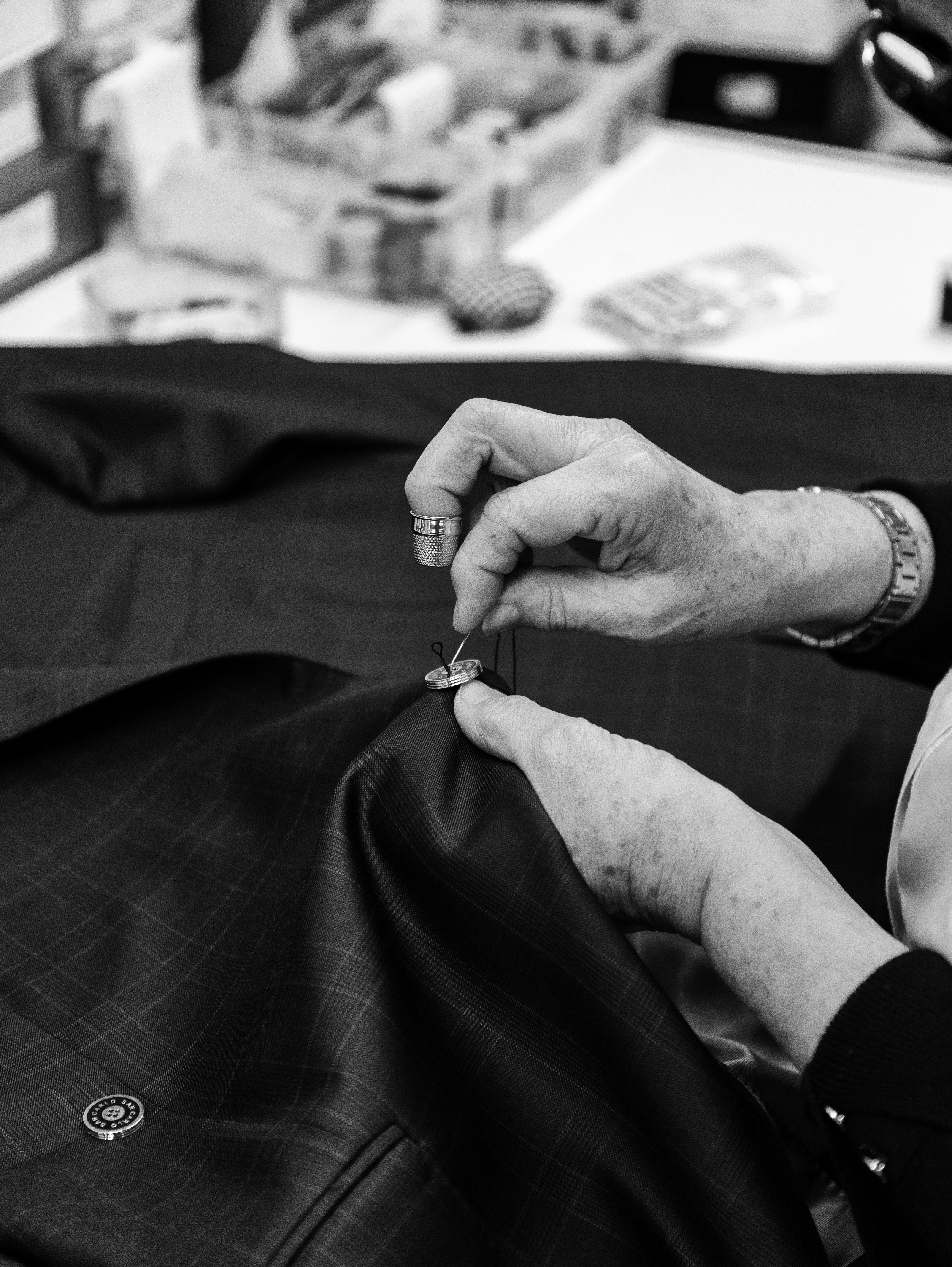
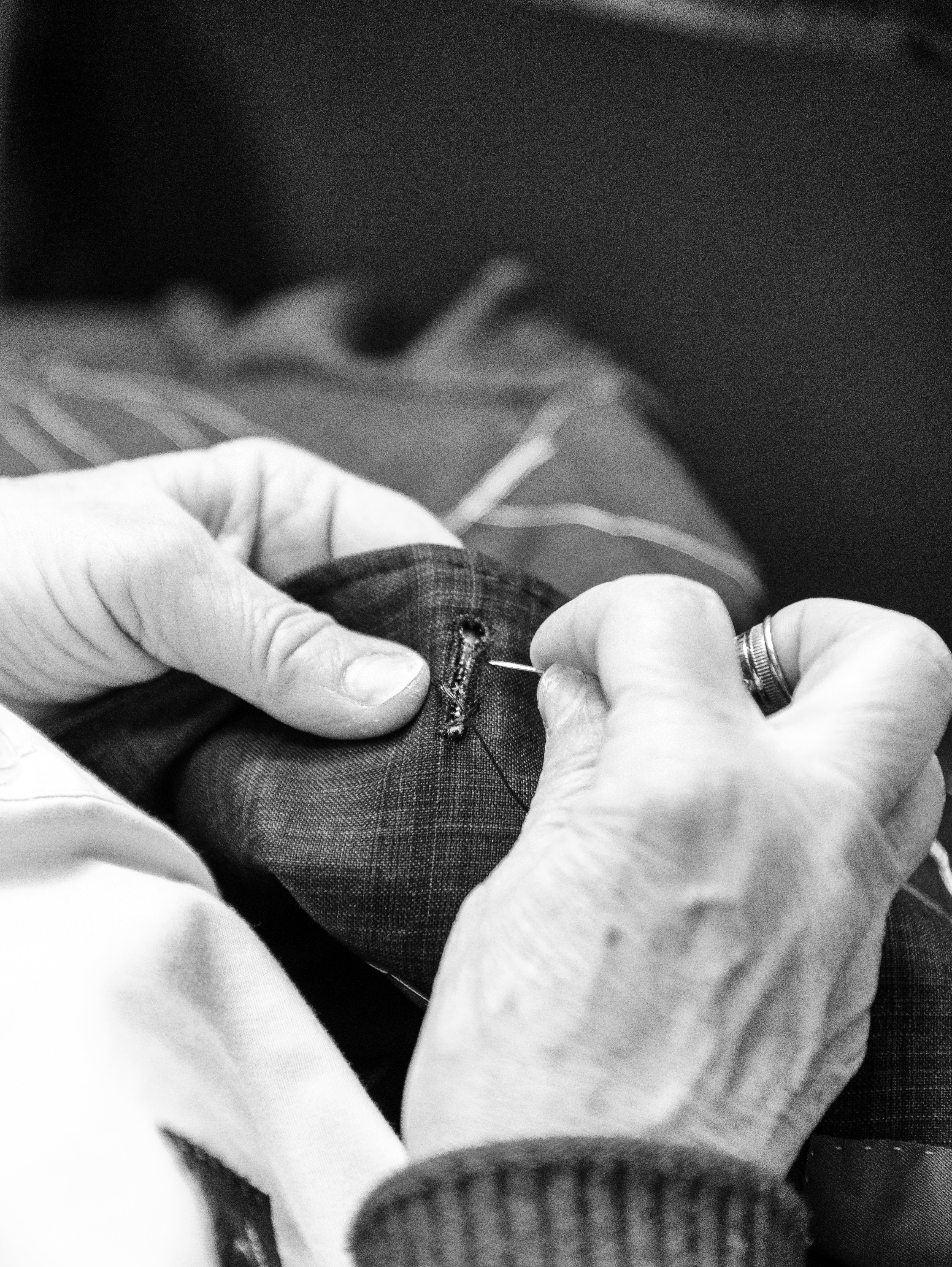
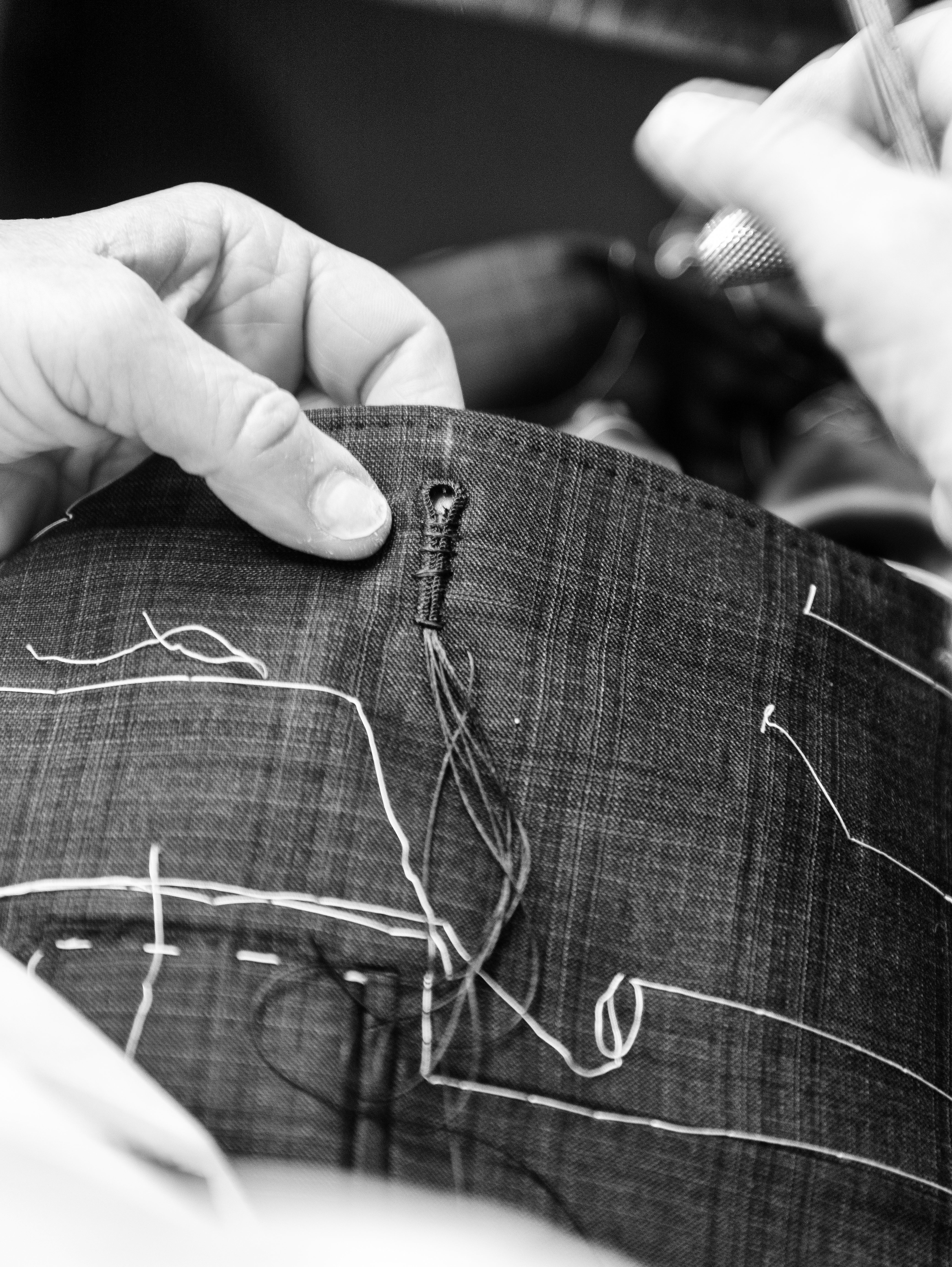

THE VALUE OF COSTUMES BASED ON QUALITY
We believe in and advocate for the reintroduction of the numerical grading system that made history in the men's fashion industry. Passionate about superior quality, we remain transparent about our suits that fall into categories from "1" to "6".
Our partnership with top manufacturers ensures the necessary skill for handmade costumes down to the finest details.
Here's how you can compare quality and value when choosing what to wear.
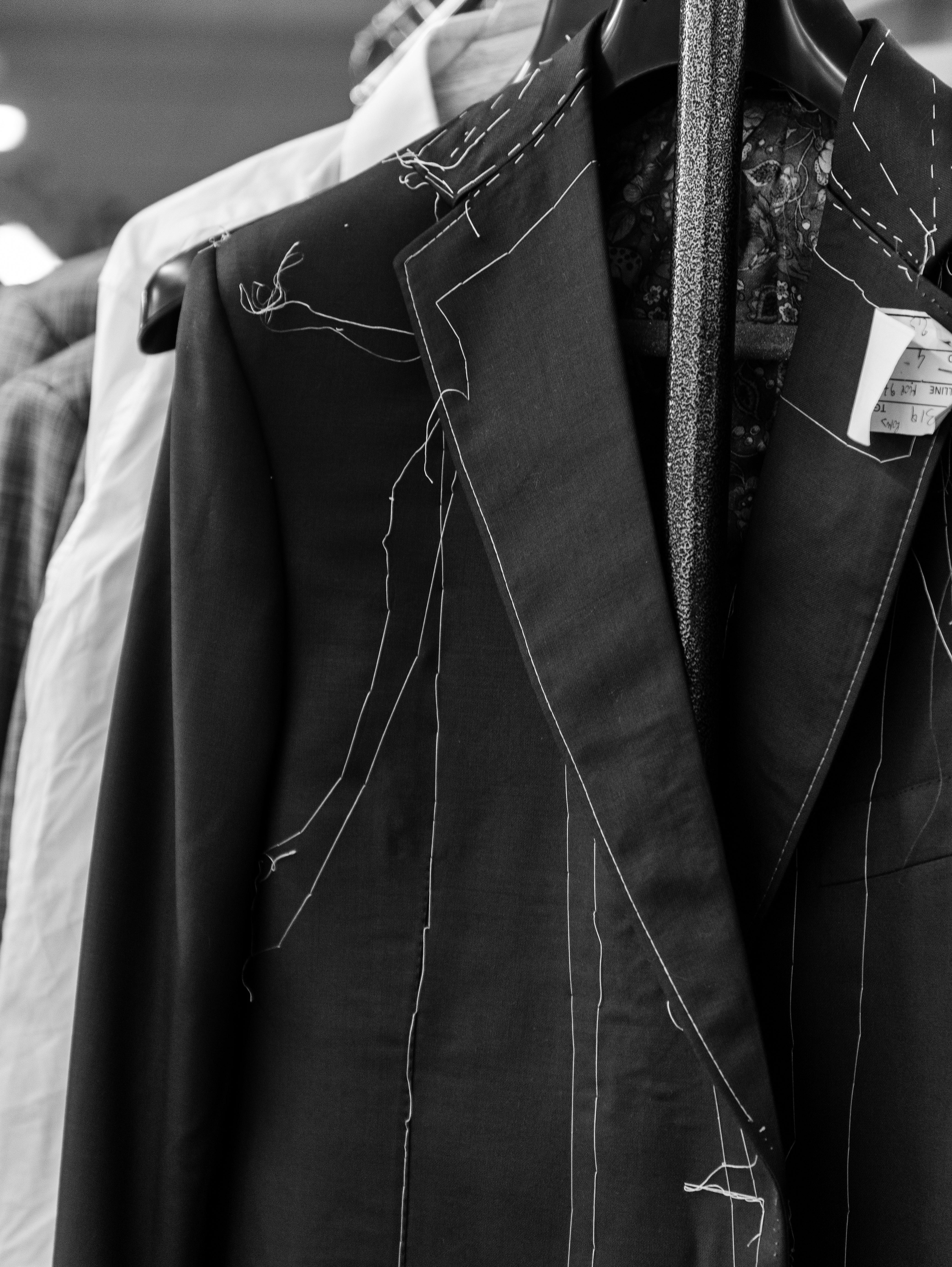
NO 6 - Highest quality
Full Canvas (traditional method) - The jacket is built entirely on the inside with a natural canvas reinforced with horse or camel hair, offering durability and a natural fit.
The lapel of the jacket is hand-sewn, ensuring an elegant and neat appearance.
The collar is completely handmade, providing comfort and a perfect fit.
The shoulder padding is hand-stitched, ensuring increased comfort.
Manual seams at the sleeve opening.
Fine details are handcrafted for a superior finish.
The lining is hand-hemmed for a flawless look.
All buttonholes and buttons are hand-sewn with silk thread, ensuring maximum attention to detail.
The suit is hand-ironed for a perfect look.
No6 Viggo suits are handmade in Italy by the company founded by Jonathan Clay. He inherits a vast experience from his father, a true specialist in the luxury tailoring industry. More precisely, Tony Clay was the first English master tailor to open a bespoke workshop in Italy, bringing the British artisanal method here.
NO. 5
Full Canvas (traditional method). Like the NO 6, the jacket is built entirely on the inside with a natural canvas reinforced with horse and camel hair (canvas).
The lapel is machine sewn, but the collar is partially handmade.
Hand-sewn shoulder padding and sleeve neckline.
Buttonholes and buttons hand-sewn with silk thread.
The suit is hand-ironed for a perfect finish.
NO. 4
Full Canvas (traditional method) - Natural canvas reinforced with horse or camel hair (the canvas) is used inside the jacket over its entire surface.
The sleeve neckline is partially handmade.
Hand hem for the collar and hem of the jacket.
NO. 3
-Half Canvas (semi-traditional method)
The canvas is used only on half the chest and on the lapel, offering a balance between structure and comfort.
The quality of Viggo's offer falls only into the higher categories, from N03 upwards. However, there are two more categories on the costume market, with NO1 quality being the most common.
NO. 2
-Half Canvas (semi-traditional method)
Reinforcement fabric is applied to the side of the chest, ensuring a good fit and a lighter construction.
NO. 1
- Thermobonding, meaning the use of thermal adhesive to reinforce the material (The adhesive may degrade over time, especially after repeated washing or exposure to excessive heat, which can lead to deformation or peeling of the reinforcement.)

CHOOSE THE MADE TO MEASURE EXPERIENCE AT VIGGO TAILORING
For a premium experience, choose our custom tailoring service, available for both men and women. Whether you opt for a made to measure suit or the elegance and perfect fit of a bespoke suit, we are dedicated to providing you with an unparalleled sartorial experience. Visit our showroom and let us turn your clothing dreams into reality.
